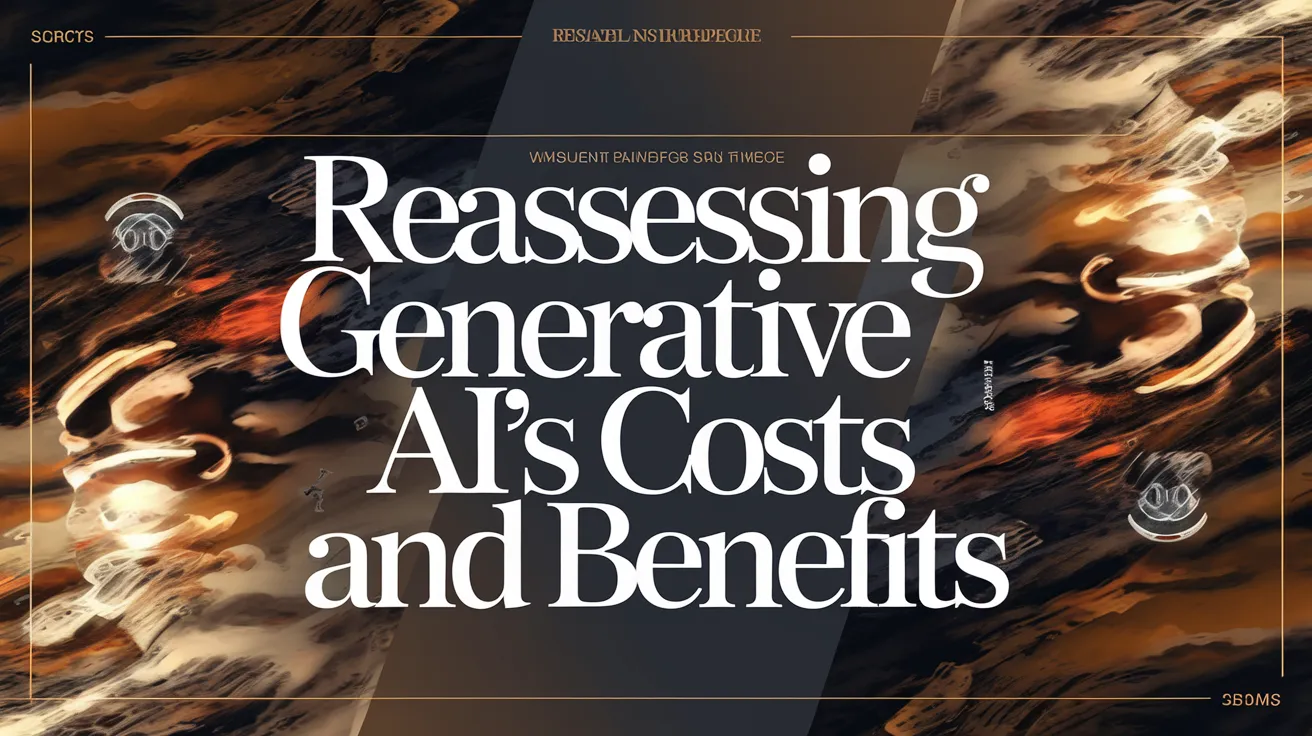Reassessing Generative AI’s Costs and Benefits

In today’s tech-driven world, the dialogue surrounding generative AI is pervasive, with organizations increasingly exploring its potential to enhance productivity and streamline processes. While it’s undeniable that generative AI can significantly accelerate output and reduce human labor, it is equally crucial for leaders to consider the broader implications of integrating AI into their workflows.
Understanding Value Beyond Output
The focus on the efficiency of generative AI often overshadows other valuable aspects of work, such as team interactions and the lessons learned through various tasks. The essential question leaders should ask is: How does each task contribute to unique value creation? For instance, writing typically involves numerous drafts and revisions; thus, it’s important to recognize that working through these challenges often yields growth and insights that a generative AI may not replicate.
The Potential of Generative AI
Generative AI can create substantial value by automating tasks that usually consume time and energy, allowing employees to concentrate on more worthwhile projects. For leaders, keeping the advantages of generative AI in mind—such as improved decision-making, acceleration of innovation, and enhanced creativity—can provide a clear path to leveraging these tools effectively.
Recognizing the Trade-offs
While the benefits of generative AI are compelling, it’s crucial to evaluate what could be compromised when tasks are outsourced to an AI. Five critical areas warrant consideration:
- Gaining Knowledge: Relying heavily on AI for tasks such as translation and summarization can hinder personal learning experiences and insight generation.
- Honing Skills: Skills develop through practice, and dependency on AI can stifle the continuous improvement that comes from solving problems personally.
- Maintaining Social Ties: AI may reduce interpersonal interactions that foster teamwork and collaboration, essential for building trust and cohesion within organizations.
- Engagement with Ideas: Engaging with material on a deeper level fosters connection and understanding. When AI summarizes or distills information, it often leads to decreased mental engagement from users.
- Maintaining Uniqueness: Content generated by AI is inherently convergent, which can dilute personal expression and unique leadership styles.
Evaluating Costs Against Benefits
Assessing the trade-offs of introducing generative AI into the workplace is complicated, as factors vary by individual experience and contextual situations. Leaders must reflect on current needs versus long-term implications, balancing the short-term gains of efficiency against the potential erosion of skills and engagement.
Conducting an AI Value Audit
Given that generative AI is likely here to stay, leaders should approach its adoption intentionally. Here’s a structured approach to performing an AI value audit:
- Identify Types of Value: Assess and list the values generated by specific tasks, including output, learning, collaboration, and uniqueness.
- Prioritize Tasks: Focus on where generative AI provides the greatest benefit while ensuring vital value areas are preserved.
- Iterate and Adjust: Regularly review the effectiveness of AI integration and be willing to adapt based on feedback and changing organizational needs.
Engaging Employees in the Conversation
Leaders must facilitate discussions about generative AI, encouraging employees to reflect on the benefits and drawbacks of its use. By fostering awareness about how generative AI affects both individual work and organizational dynamics, leaders can guide smoother transitions into an AI-enhanced workplace.